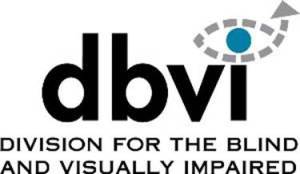Web Pages and HTML
| Web pages are special files called HTML (Hyper Text Markup Language) documents. While web pages can be very complicated, HTML files are relatively simple. They are text documents that include special tags that tell the browser program how to display and inventory them. |
| In-session Exercise: Below you’ll find links to the same HTML file. The first one shows the file being displayed by a browser. The second is a Word file that contains the text markup for the page. Use the JAWS read all command (Insert + Down Arrow) to read these documents. |
| Example web page |
| Example HTML document |
The Web and Accessibility
| You have probably noticed that some websites are more accessible than other websites. This is similar to how some software programs are more accessible than other software programs. The accessibility of a piece of software depends on the developers – the program can be made accessible if the programmers have the know how and the time to make it so. Similarly, webpages can be made accessible if the web developer makes them accessible. The problem is creating a webpage is extremely simple. There are software programs, apps, and webpages that help people with no knowledge of HTML create their own websites. Since there is no control over the quality of HTML markup and pretty much anyone can create a webpage, you’re going to find that many websites are not accessible! |
| If you want to read more about web accessibility, feel free to visit the link below to the American Foundation for the Blind’s article on Creating Accessible Websites |
| AFB Creating Accessible Websites |
Web Browser Key Commands
| There are a number of integral shortcut commands that are available with or without using JAWS. These commands work in all the major web browser program (Internet Explorer, Mozilla Firefox, Google Chrome). | |
| Move to Address bar | Ctrl + L |
| Go to your home page | Alt + Home |
| Open a new tab | Ctrl + T |
| Switch between tabs | Ctrl + Tab |
| Close a tab | Ctrl + W |
| Open a new window | Ctrl + N |
JAWS Key Commands for Web Browsing
| There are a huge amount of hotkeys that can be used for navigating and interacting with web pages with JAWS. We’re going to start slow. Many of the hotkeys help JAWS users navigate through the content of the webpage – jumping from item to item. |
General Hotkeys for Web Browsers
| Go back a page | Alt + Left Arrow |
| Go forward a page | Alt + Right Arrow |
| Refresh a page | Ctrl + F5 |
| Read Address bar | Insert + A |
Headings
| Headings are titles of pages or sections. In HTML, developers use h tags to mark headings. Headings have different levels with the highest level headings being marked with the h1 tag and lower level headings being marked with h2, h3, h4, and so on. | |
| Navigate through headings | H |
| List headings | Insert + F6 |
Links
| Links or “Hyperlinks” are text that contain a reference to another web address. When you click a link, you are typically taken to a new webpage. In HTML, links are distinguished with anchor tags. | |
| Navigate through unvisited links | U |
| Navigate through visited links | V |
| List links | Insert + F7 |
Form Fields
| Filling out online forms is a big part of web browsing. | |
| Navigate through form fields | F |
| List of form fields | Insert + F5 |
Last Note
| In HTML, you can nest your tags. What does that mean? You can have something like a link that is also an image. So, when you’re finding lists of web elements, you may notice that something may appear on more than one of your lists. |
